
Pathology Department History
Arnold Rice Rich
Written by Robert H. Heptinstall
I am very privileged this evening to pay tribute to Arnold Rich on the 100th anniversary of his birth. You will have available to you Jack Yardley's outline of his career and I shall attempt to expand on this.
He was born in Birmingham, Alabama on March 28, 1893, and after receiving his early education at a military preparatory school in North Carolina and the University of Virginia, he entered The Johns Hopkins School of Medicine in 1915 and graduated in 1919. During his medical school years his research interests were manifest by a series of studies with William Henry Howell, Professor of Physiology at that time, on various aspects of blood coagulation.
On graduation from medical school it had been Rich's intention to go in for experimental surgery, but before starting his internship in surgery, Halsted suggested the desirability of a year in pathology with MacCallum. Rich became so entranced with pathology and its potential for investigative work that he never returned to the surgery program, and except for a year with Eppinger in Vienna in the early 1920s, spent the rest of his career in the Department of Pathology. He became Associate Professor in 1923, was promoted to Professor in 1944, and in 1947 was appointed Baxley Professor of Pathology and Pathologist-in-Chief to the Hospital. He retired in 1958 and died at the age of 75 in 1968.
Virtually everything Rich did he did well and we can start off with his investigative work. His early research was on bilirubin metabolism and the causes of jaundice, ending with his classic paper on the division of jaundice into two main types, retention and regurgitant, a classification which with some juggling of words is till valid today.
The next major stage of his research involved tuberculosis. It is impossible to describe all of these studies, but if two aspects had to be singled out, one would be his demonstration of the dissociation of immunity and allergy which he also extended to syphilitic and pneumococcal infections and the other his showing by means of tissue culture that the allergic reaction in tuberculosis was a cellular phenomenon and that circulating antibody was not involved. The culmination of the tuberculosis period was the publication of his monograph The Pathologenesis of Tuberculosis in 1944 with a second edition in 1951. This monumental work took 9 years to complete and remains a model of what a monograph should be, an amalgam of the author's personal experience and a critical evaluation of the work of others.
The next period of Rich's investigative work is the one for which he is best remembered namely his observations and studies on serum sickness, polyarteritis and glomerulonephritis and their relation to hypersensitivity. These were important not only from the light they shed on these diseases at the time but probably more importantly for the way in which they stimulated further work on the role of antigen-antibody complexes in their pathogenesis. It is important to note that as with so much of Rich's work the stimulus came from material passing through the autopsy room. He noticed that several patients who had been treated with immune serum and sulfonamides for various infections developed the stigmata of serum sickness and exhibited the lesions of polyarteritis nodosa at autopsy. He suggested that the arteritic lesions were manifestation of hypersensitivity and that they were a part of the serum sickness, the sulfonamides having prolonged life sufficiently for the arteritic changes to develop. He described at a later time that polyarteritis could develop with sulfonamides alone suggesting a hypersensitivity reaction to these drugs, and in a subsequent paper described the same lesion as a reaction to iodine. Like the true scientist he was, Rich then undertook a series of experiments to prove this contention, and he and Gregory injected rabbits with a single large dose of foreign protein in the form of horse serum. After a period of several days they found the rabbits developed lesion identical with those of human polyarteritis lending support to the idea that the latter disease is a manifestation of hypersensitivity. Little attention was paid to the kidney in these early papers, but subsequently Rich described the remarkable resemblance the glomerular changes in the rabbits bore to the lesions of human acute proliferative glomerulonephritis. I am sure that you all know the rest of the story in that following the availability of purified foreign proteins, numerous investigators produced acute glomerulonephritis in rabbits by a single injection of BSA and were able to monitor the fate of the antigen and measure the appearance of antibody in the circulation, at the same time correlating these with the appearance of the lesions. I should like to call your attention to the fact that one of the earliest studies on the disposal of injected antigen was done by Harrison Latta, with us tonight, was Rich's chief resident 1945-46. Using these approaches, one of Rich's star pupils, Fred Germuth, was able to show that experimental acute glomerulonephritis appeared during the phase of immune elimination of antigen thus further confirming the role of antigen-antibody complexes in its pathogenesis. He went on to propose that the glomerulonephritis came about by the deposition of circulating soluble complexes in the glomeruli, an idea that became widely accepted. It is of considerable interest, however, that the old idea entertained by Rich, namely that antigen becomes fixed in the glomeruli and undergoes local union with circulating antibody, has recently been resurrected and has received much support from experimental studies.
Rich's contributions were acknowledged by the honors he received. He was elected a member of the National Academy of Sciences; appointed Chevalier of the French Legion of Honor, received the Kober Medal of the Association of American Physicians, the Trudeau Medal for his work on tuberculosis and numerous other distinctions.
Let us now look at Rich the practicing pathologist especially in view of the current vogue of non-pathologists or barely-pathologists occupying senior positions in pathology. Like most people of his day he was superbly trained and highly competent human pathologist. He stood out from the rest however by his astute powers of observation and by his ability to discern that he was dealing with something unique. Who else but Rich in the course of signing out autopsies from children dying with lipoid nephrosis would have noticed that a select group of glomeruli showed sclerotic lesions. His observation of what he described as "a hitherto undescribed vulnerability of the juxtamedullary glomeruli" has been repeatedly confirmed but still not explained. He was among the first to describe the high prevalence of occult cancer of the prostate in elderly men, the first to describe strange lymphoid polypoidal structures in kidney tubules which he attributed to syphilis, and the first to describe widespread pulmonary vascular obstruction in children with the tetralogy of Fallot. With his long time clinical associate Louis Hamman, he described a unique pulmonary interstitial lesion as part of what has become known as The Hamman-Rich syndrome.
It was in his teaching, however, that Rich made his greatest local impact. Starting off with Welch teaching was given a high priority in the department with the head of the department taking a leading role. In fact, three years before the hospital opened and seven years before the first class was admitted to medical school, Welch with the help of Councilman (later to become Shattuck Professor of Pathological Anatomy at Harvard) inaugurated a series of lectures in pathology for local practitioners and the embryo staff of the hospital. MacCallum, his successor, was the author of the most famous pathology textbook of its day and the originator of the summer student prosectorship program. Rich surpassed Welch and MacCallum both in quantity and in the quality of his teaching. He lectured to the entire medical student class and led one of the small teaching groups right up to the time of his retirement. His teaching was never a dull recital of facts but a stimulating exercise in which the students were taught to think for themselves. He always maintained that the pathology course was the first time in their lives that medical students were challenged in this way, and that this was the true purpose of the pathology course. Although the clinical-pathological conferences had been initiated in Welch's days, and although there had been formidable performers such as Winternitz and MacCallum, it was rich who elevated these exercises to new heights. He did every single CPC when he was in town, usually with Louis Hamman as the clinician. This was a time-consuming process for Rich, but even more so for the resident designated to find a suitable case. Every week the resident and a resident from Medicine would seek out six or more cases for consideration and would then present them to Rich for his assessment of their suitability. This was a long and tiring, although highly rewarding, session for the resident which could take several hours. Sometime none of the proferred cases was acceptable, for certain rigid criteria had to be met, and the search for new cases would begin again. It was this scrupulous choosing of cases coupled with Rich's superb, even dramatic presentations, that made his CPCs such memorable events. Another teaching exercise, this time for the professional staff of the hospital, was the Monday evening conference held every two or three months at which Rich presented and expounded on some interesting condition. His observations on the vulnerability of the juxtamedullary glomeruli were first presented at one of these conferences as were other topics he was working on. Again a pathology resident helped in the work up of the case and as in the CPC selection came into intimate contact with Rich and benefited accordingly. Rich also had lively sessions with the residents at The Journal Club which met under relaxed circumstances in his home. His influence was also felt at the meetings of the now defunct Johns Hopkins Medical Society and the Johns Hopkins Research Club at which he was a constant attender and active participant.
It is difficult in retrospect to see how he could have achieved so much but he was well organized and made the best use of his time. He very seldom appeared at work before 11 o'clock in the morning and did most of his writing at home when most people were asleep. It must be pointed out that he lived at a time when committee work was less onerous, that he spent little time traveling, and as we shall see late that he was not caught up in the endless writing of grant applications.
He had an immense number of interests and a wide knowledge of many things. He had a great love of music and both he and his wife were excellent instrumentalists, he on the viola and she on the piano. The Journal Club meetings usually ended with those of the housestaff with musical talents joining Dr. and Mrs. Rich in impromptu orchestral renderings. Gerry Spear, here tonight, was an excellent violinist and a frequent participant. Another ex-member of the housestaff, also her tonight, Jim Shaka, played the bassoon, but I don't know whether this was ever welcome at these musical gatherings.
Socially he was delightful with a great sense of humor and fun and could be just as charming in company as he was intimidating in scientific debate. Morgan Bertrong, one of our distinguished alumni, tells of the fear and trepidation he and his wife experienced having invited Dr. and Mrs. Rich to dinner at their apartment on McElderry Street when Morgan was on the housestaff. The ice was broken and the success of the evening guaranteed when Rich, who was not a big man, sat in the tiny rocking chair of Morgan's five year-old daughter and was promptly told to remove himself because it was hers. Rich complied at once saying very graciously, "My dear young lady, I may occupy the Baxley Chair of Pathology across the street, but here, I agree, the chair is yours." He was no prude and was a frequent attender at the annual show of the Pithotomy club. There is a picture of him at one of these shows in the current issue of The Hopkins Medical News convulsed with laughter and wiping tears from his eyes with one hand and smoking a Lucky Strike with the other.
He disliked exercise which always struck me as paradoxical for someone whose front door required the climbing of the best part of 100 steps, and was never caught up in the hysteria of sport. His definition of a baseball player was a brute who beats a ball with a stick. He would have felt his opinion completely vindicated if he had witnessed the unedifying scene at Camden Yards on Sunday. He preferred more leisurely and less physically demanding activities such as fishing and he and his mother went on angling trips even when she was of advanced age.
In contrast to most academics he was conservative in his politics and I read only last week a letter he had written to the Evening Sun condemning what he regarded as the soft policy towards the USSR of the then Secretary of State, Dean Acheson. It is said that in one of his letters he advocated the dropping of an atomic bomb on Moscow, but I have been unable to verify this. His mistrust of government interference forbad him to apply for federally supported research grants and during my first stay at Hopkins from 1954 to 55, there was only one NIH grant in the entire department. In a charming tribute to Rich following his death, Ivan Bennett, who was Rich's successor as Baxley Professor, wrote "He could not imagine that a true a true scholar should be expected to obtain the money to support his research. He prophesied that he federal cornucopia would erode the quality of academic life. He decried the continuing expansion of the staff with easy money and complained about the loss of close association and intimate discussion with colleagues as quality gradually yielded to quantity. He steadfastly refused to apply for or to accept government grants. Was he simply opposed to change? Did he wish to cling to the patrician past and exclude plebeian newcomers from the ivory tower? Possibly, but above all, he sought to preserve and protect the excellence that had drawn him to Johns Hopkins and to which he had added so large a measure and to avoid its slightest dilution by the mediocrity of expediency. Were his views extreme? Events may yet prove that he was wiser than we." Bennett of course had been at the receiving end of one of Rich's pungent comments in this regard for when he was head of the infectious disease division of the department of medicine he had received a large federal grant to build and equip a new research laboratory. Proudly showing Rich round the newly built and superbly equipped laboratory, he was taken aback when the laconic opinion was given "You know Bennett, I'd trade it all for one good idea."
Finally what made him so unique apart from his great scientific accomplishments was his utter devotion and loyalty to Johns Hopkins in general and the pathology department in particular. Apart from his year in Vienna, he spent his entire medical career at Johns Hopkins and seldom left Baltimore to attend meetings. He was not a medical politician and as far as I know he never held office in any of the pathology societies. He never considered for a moment publishing his original articles anywhere else but in the Bulletin of The Johns Hopkins Hospital and never gave any thought to which was the most prestigious or widely read journal. Some might consider his approach parochial, but if so, it paid handsome dividends for Johns Hopkins and generations of students and young people in training. No one who came in contact with him was unaffected. The older graduates of the medical school always singled him out as the teacher who made the greatest impression on them and the research contributions of four alumni here this evening, Harrison Lata and Gerry Spear on the kidney, Gordon Hennigar on the adverse effects of drugs and George Glenner on amyloid were undoubtedly sparked by his pioneer work or by his example.
I apologize for taking so long but I believe it is important that those who did not know Rich should have some idea of what the man stood for and know of his tremendous contributions to medicine, to Johns Hopkins and to the Department of Pathology.
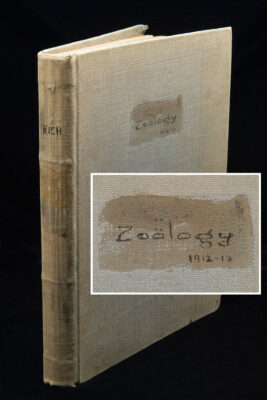
Arnold Rich's College Notebook
The Department recently acquired a book of zoology notes and drawings created by Arnold Rich when he was an undergraduate at the University of Virginia (1912-13). This book contains a number of absolutely stunning illustrations created by Arnold Rich. They begin with Protozoa, progress through Annelida, and end with Mammals. The illustrations and accompanying text are presented in a systematic evolutionary order. While the book will be donated to the Chesney Medical Archives for safe keeping, we thought we would share some of the illustrations with you here. Enjoy!
(If the images appear small, please refresh your page.)
-
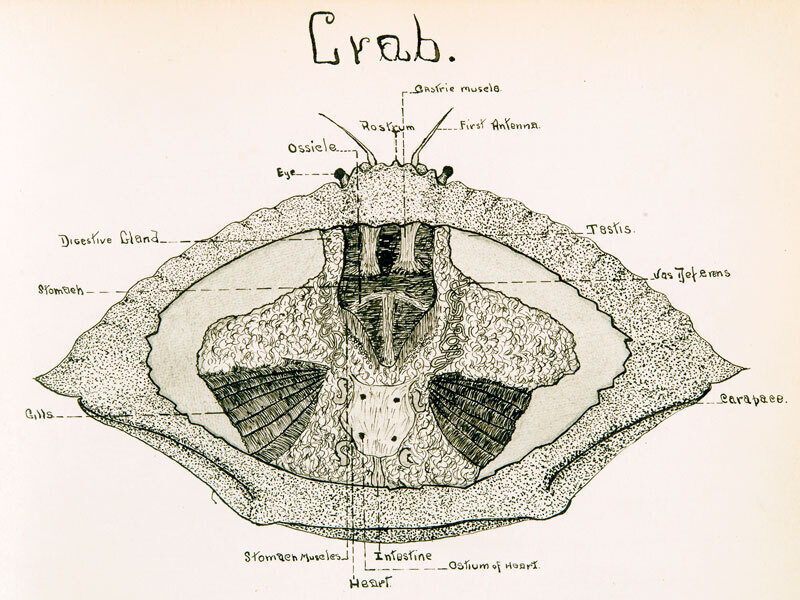
Arnold Rich's College Notebook
Crab
-
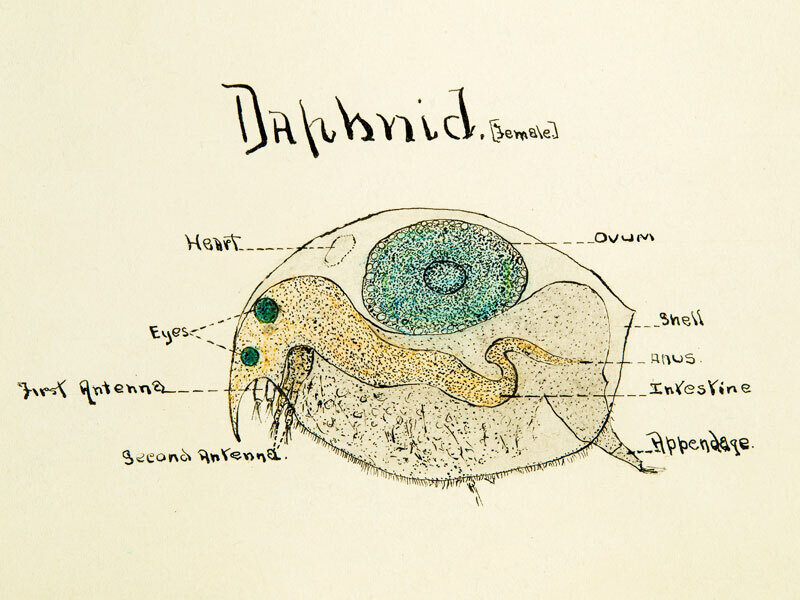
Arnold Rich's College Notebook
Daphnid
-
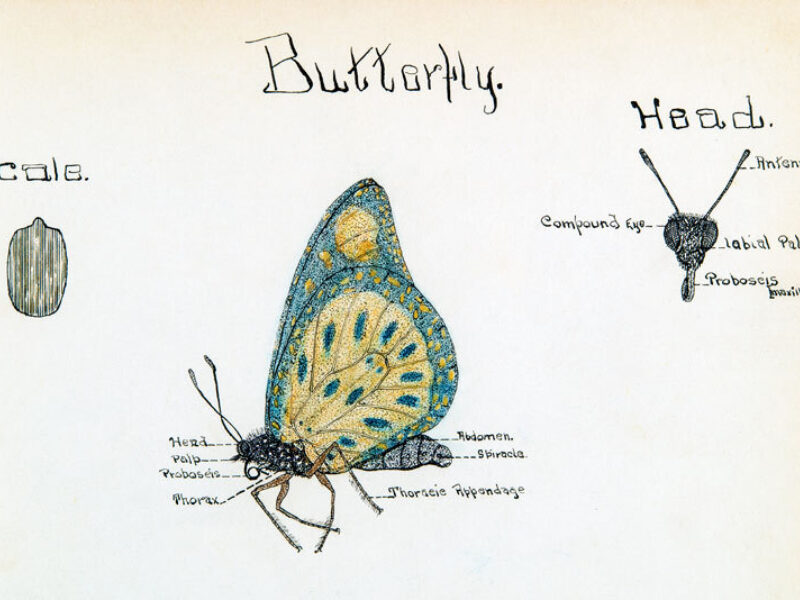
Arnold Rich's College Notebook
Butterfly
-
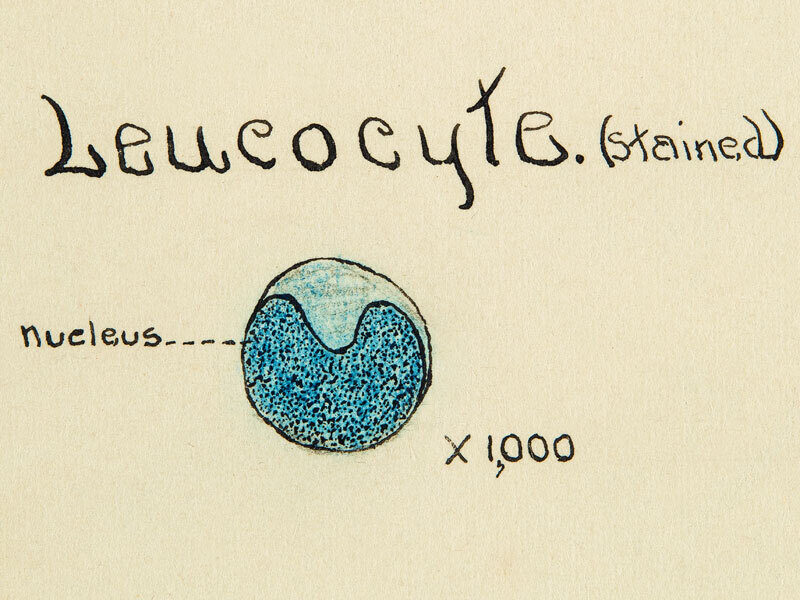
Arnold Rich's College Notebook
Leukocyte
-
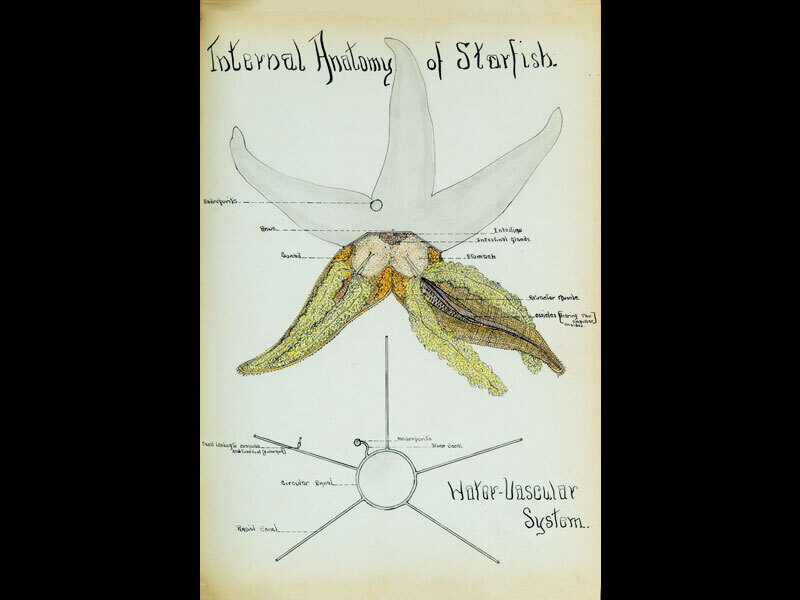
Arnold Rich's College Notebook
Starfish
-
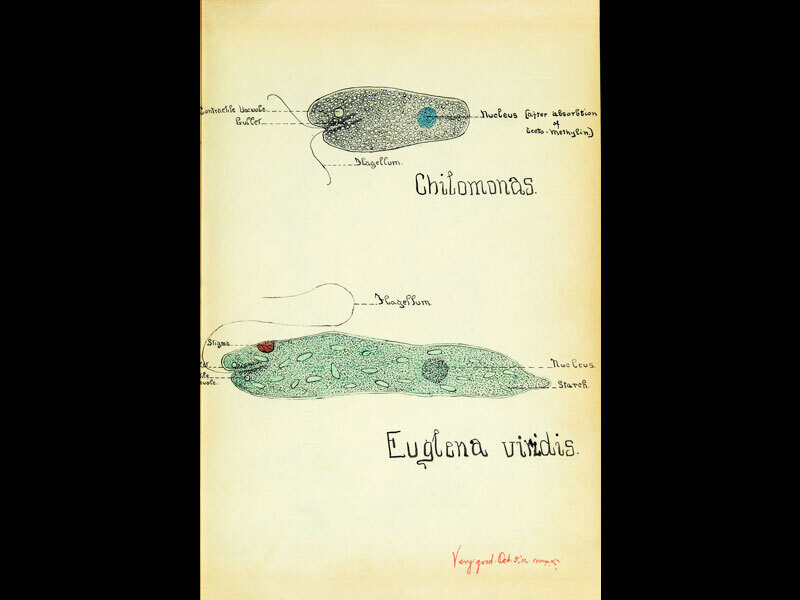
Arnold Rich's College Notebook
Chilomonas
-
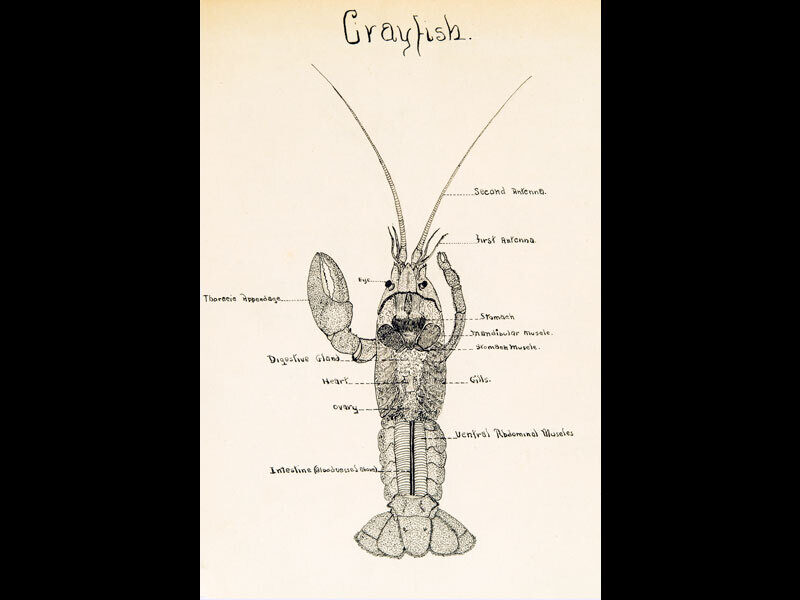
Arnold Rich's College Notebook
Crayfish
-
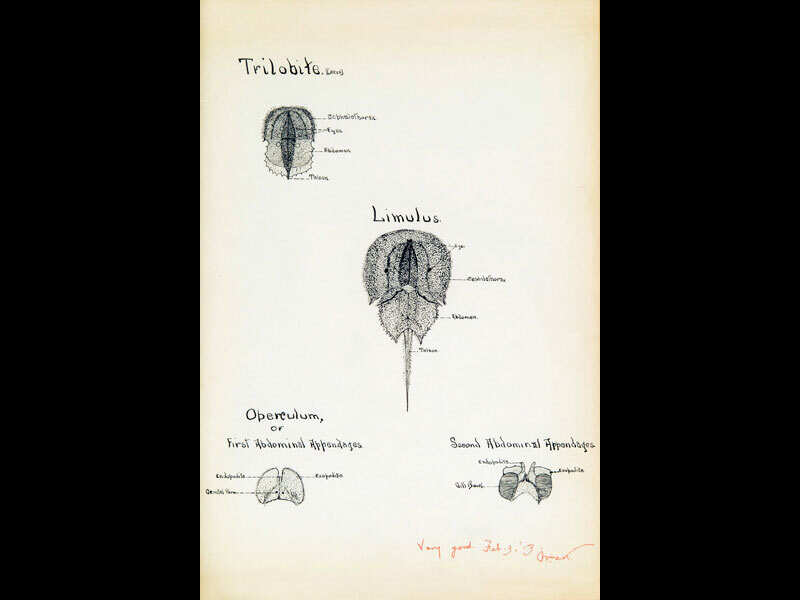
Arnold Rich's College Notebook
Trilobite
-
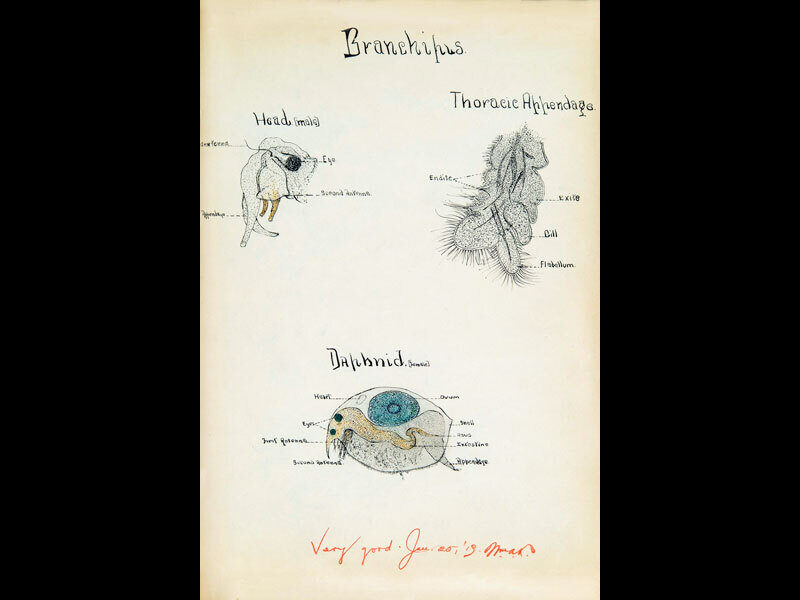
Arnold Rich's College Notebook
Branchipus
-
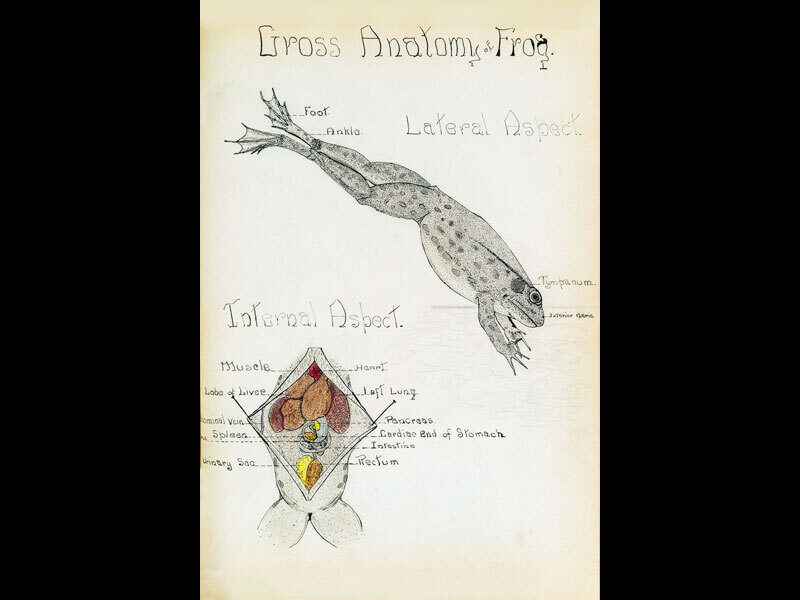
Arnold Rich's College Notebook
Gross Frog
-
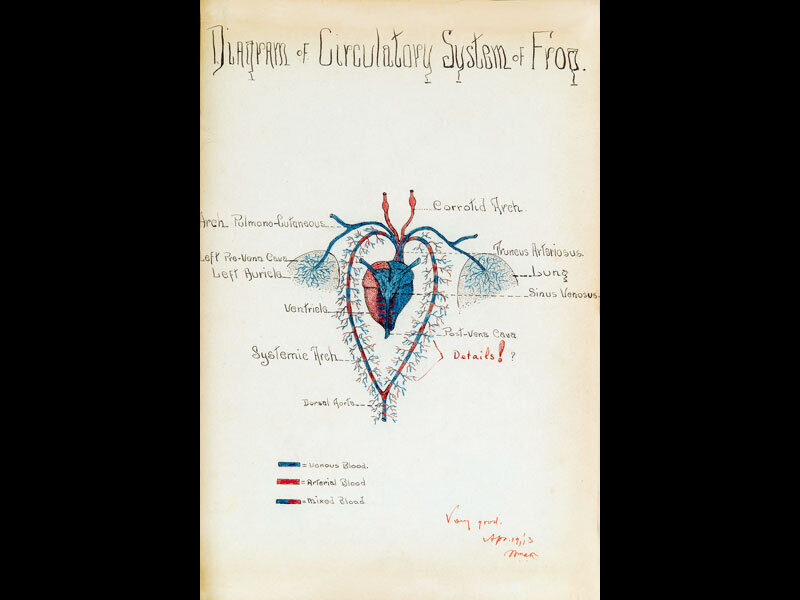
Arnold Rich's College Notebook
Diagram of Circulatory System of Frog
-
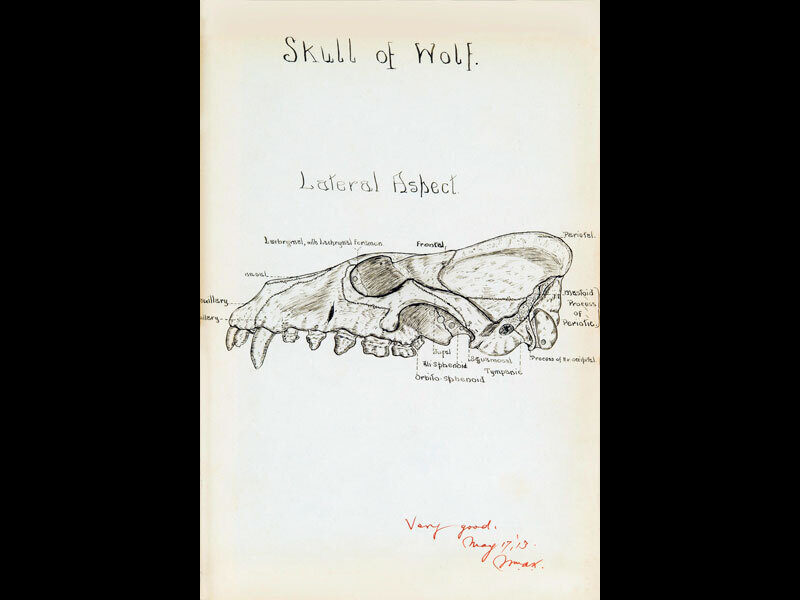
Arnold Rich's College Notebook
Skull of Wolf
-
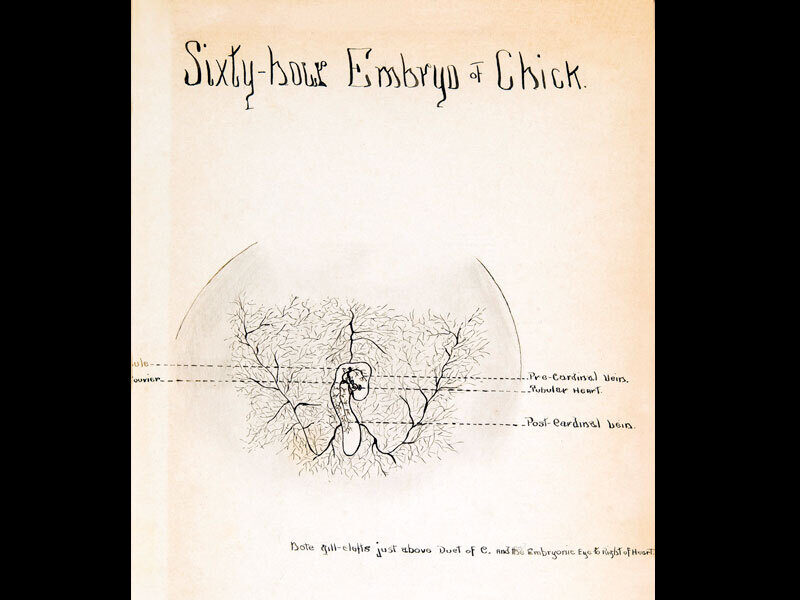
Arnold Rich's College Notebook
Sixty-hour Embryo of Chick
Arnold Rich's College Notebook

Crab
Arnold Rich's College Notebook

Daphnid
Arnold Rich's College Notebook

Butterfly
Arnold Rich's College Notebook

Leukocyte
Arnold Rich's College Notebook

Starfish
Arnold Rich's College Notebook

Chilomonas
Arnold Rich's College Notebook

Crayfish
Arnold Rich's College Notebook

Trilobite
Arnold Rich's College Notebook

Branchipus
Arnold Rich's College Notebook

Gross Frog
Arnold Rich's College Notebook

Diagram of Circulatory System of Frog
Arnold Rich's College Notebook

Skull of Wolf
Arnold Rich's College Notebook

Sixty-hour Embryo of Chick
